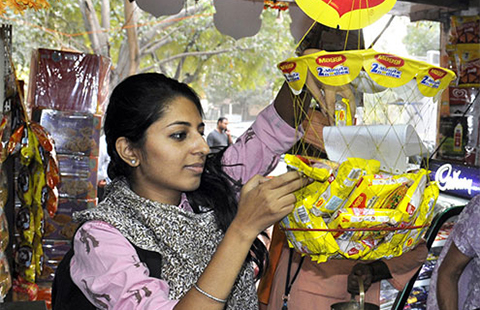
China, Kenya are working together to toughen enforcement and are sharing strategies to combat ivory trade
In recent years, close collaboration between China and Kenya has yielded successful results in the fight against ivory poaching and trafficking.
The move follows bilateral agreements between the countries, which has seen China commit to assisting the east African country to bolster its human capacity and logistics, tools needed to strengthen the fight against well-funded poaching syndicates.
|
Confiscated tusks and ivory artworks on display at Beijing Wildlife Rescue and Rehabilitation Center before being destroyed. Provided to China Daily |
The issue is important economically: Tourism in Kenya is the second-largest foreign currency earner, contributing about 12 percent of GDP.
In April, senior Kenya Wildlife Service officials visited China to strengthen the two countries' joint efforts in wildlife protection and conservation.
The nine-day visit also saw Kenya hold talks with China's State Forestry Administration, and explore strategic partnerships in tourism, culture and peace.
This was an important follow-up to high-level agreements signed between the two countries to boost wildlife protection in the wake of increased human and environmental threats.
The Kenyan delegation, led by KWS Director-General William Kiprop, was keen to learn from China strategies that have over the years, succeeded in helping shore up numbers of its prized giant pandas.
According to Science Daily, a journal documenting the latest research, a study led by Duke University in the United States has shown that Chinese conservation measures to protect pandas in the wild have also cast a protective net over other threatened species, including birds, mammals and amphibians.
China and Kenya are among eight countries mandated by the Convention on International Trade in Endangered Species of Wild Fauna and Flora to strengthen wildlife protection and combat the illegal trade in wildlife trophies.
In the past four years, Kenya has been the beneficiary of China's assistance to improve its conservation efforts. In October, China donated 18 four-wheel-drive vehicles and assorted equipment worth a total of $500,000 to KWS.
This fulfilled an agreement signed during a visit by Chinese Premier Li Keqiang last year, according to Judi Wakhungu, cabinet secretary at the Kenyan Ministry of Environment, Natural Resources and Regional Development Authorities.
During the visit, 17 agreements were signed, including the provision of surveillance and night vision equipment worth $530,000. China has provided $10 million to support wildlife protection and conservation in Africa.
In addition, China and Kenya have undertaken stringent efforts to address the illegal sale of ivory.
The Kenyan government has burned 15 metric tons of ivory, a symbolic move to diminish the value of the ivory in the market. It also increased vigilance at its ports while implementing stiffer penalties for criminals found with ivory trophies. Last month, China enacted a one-year ban on African ivory hunting trophy imports. It also destroyed six tons of confiscated ivory tusks and carvings in Guangzhou, Guangdong province, while its courts have stepped up prosecution of illegal trading cases.
"A big study in China on many levels proved that the government is committed to taking measures to diminish the market for ivory. The move to impose an import ban needs to be complemented with awareness campaigns," says Iain Douglas-Hamilton, zoologist and founder of the nonprofit organization Save the Elephant.
lucymorangi@chinadaily.com.cn
(China Daily Africa Weekly 11/27/2015 page9)








